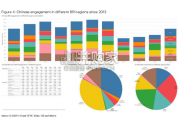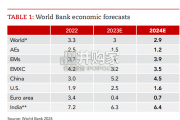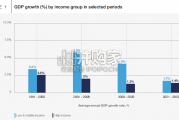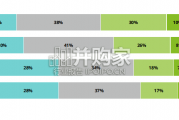China’s financing and investment spread across 61 BRI countries in 2023 (up...
2024-02-27 30 英文报告下载
Slower growth is a function of tighter monetary policy. The last 12 months have seen the largest change in the fed funds rate since 1981, in the ECB target rate since the eurozone was created, and the broadest tightening of global central bank policy since at least 1980. That tightening was so aggressive because inflation kept beating expectations. Going forward, this changes. Our economists expect core inflation to moderate across EM and DM, allowing the global tightening cycle to pause, then reverse. Why does inflation finally retreat? Skepticism here is understandable; inflation forecasting hasn’t exactly covered itself in glory.
But we see several specific supports: In the US, core goods prices can show outright declines as used car prices fall, overshooting goods consumption moderates (see above), and high inventories invite discounting. Trends in shelter look more balanced as rates on new leases cool. In the eurozone, large base effects in food and energy should reverse, while our economists' forecast of a recession eases core price pressures. Inflation in EM should generally improve, while inflation in DM Asia is already more muted. Less core inflation finally gives central banks license to pause (and then reverse) the tightening cycle. We expect the Fed and ECB to make their final hikes in January and March 2023, respectively, with the Fed cutting by 4Q23. Meanwhile, several large EM central banks, which were well out in front of their DM counterparts, start to ease materially. By end-2023, we forecast that policy rates decline by 275bp in Brazil, 250bp in Hungary, and 475bp in Chile.

标签: 英文报告下载
相关文章

China’s financing and investment spread across 61 BRI countries in 2023 (up...
2024-02-27 30 英文报告下载

Though the risk of AI leading to catastrophe or human extinction had...
2024-02-26 50 英文报告下载

Focusing on the prospects for 2024, global growth is likely to come i...
2024-02-21 95 英文报告下载

Economic activity declined slightly on average, employment was roughly flat...
2024-02-07 66 英文报告下载

Economic growth can be defned as an increase in the quantity or quali...
2024-02-06 82 英文报告下载

In this initial quarterly survey, 41% of leaders reported their organizatio...
2024-02-05 66 英文报告下载
最新留言